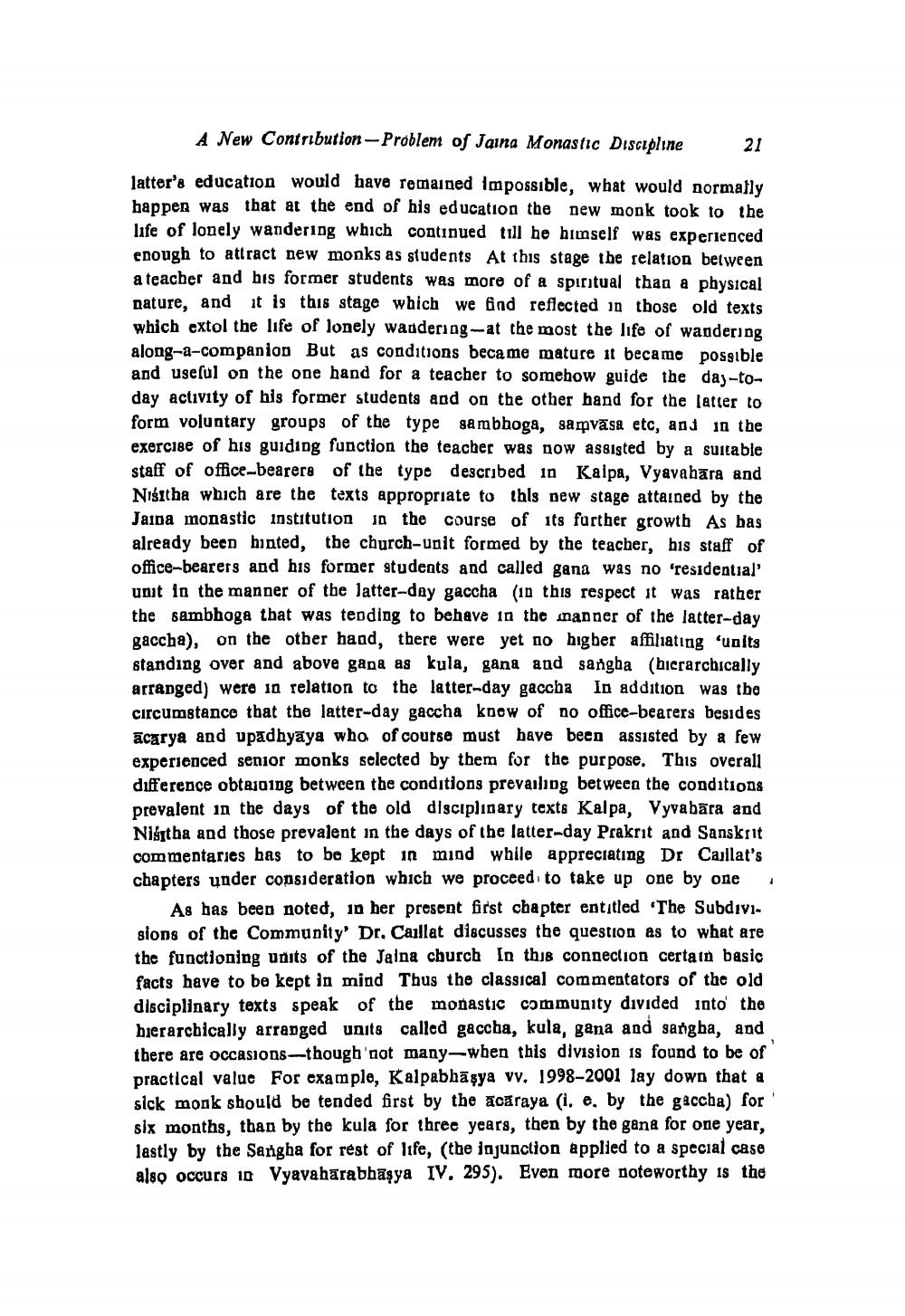________________
A New Contribution - Problem of Jaina Monastic Discipline 21 latter's education would have remained impossible, what would normally happen was that at the end of his education the new monk took to the life of lonely wandering which continued till he himself was experienced enough to attract new monks as students At this stage the relation between a teacher and his former students was more of a spiritual than a physical Dature, and it is this stage which we find reflected in those old texts which extol the life of lonely wandering-at the most the life of wandering along-a-companion But as conditions became mature it became possible and useful on the one hand for a teacher to somehow guide the day-today activity of his former students and on the other hand for the latter to form voluntary groups of the type sambhoga, samvāsa etc, and in the exercise of his guiding function the teacher was now assisted by a suitable staff of office-bearers of the type described in Kalpa, Vyavahara and Nišitha which are the texts appropriate to this new stage attained by the Jaida monastic institution 10 the course of its further growth As bas already been hinted, the church-unit formed by the teacher, bis staff of office-bearers and his former students and called gana was no 'residential unit in the manner of the latter-day gaccha (in this respect it was rather the sambhoga that was tending to behave in the manner of the latter-day gaccha), on the other hand, there were yet no higber affiliating units standing over and above gana as kula, gana and sangha (hierarchically arranged) were in relation to the latter-day gaccha In addition was the circumstance that the latter-day gaccha know of no office-bearers besides acarya and upadhyaya who of course must bave been assisted by a few experienced senior monks selected by them for the purpose. This overall difference obtajo1ng between the conditions prevailiog between the conditions prevalent in the days of the old disciplinary texts Kalpa, Vyvabāra and Nistha and those prevalent in the days of the latter-day Prakrit and Sanskrit commentaries has to be kept in miod while appreciating Dr Caillat's chapters under consideration which we proceed to take up one by one
As has been noted, in her present first chapter entitled 'The Subdivisions of the Community' Dr. Caillat discusses the question as to what are the functioning units of the Jaina church In this connection certain basic facts have to be kept in mind Thus the classical commentators of the old disciplinary texts speak of the monastic community divided into the hierarchically arranged units called gaccha, kula, gana and gangba, and there are occasions--though'not many-when this division is found to be of practical value For example, Kalpabbāşya vv. 1998-2001 lay down that a sick monk should be tended first by the acaraya (1. e, by the gaccha) for six months, than by the kula for three years, then by the gana for one year, lastly by the Sangha for rest of life, (the lajunction applied to a special case also occurs in Vyavahārabbāşya IV, 295). Even more noteworthy is the




